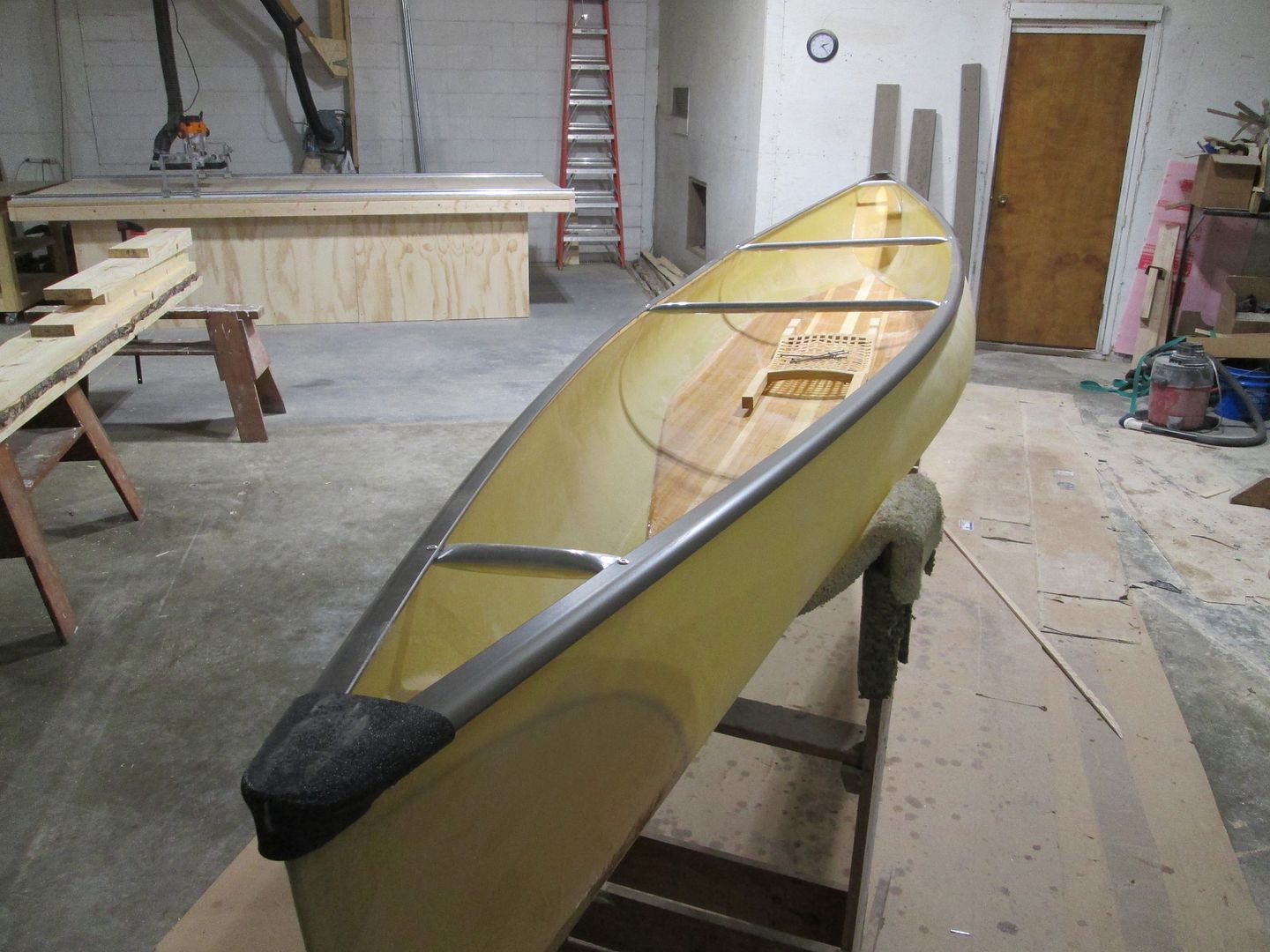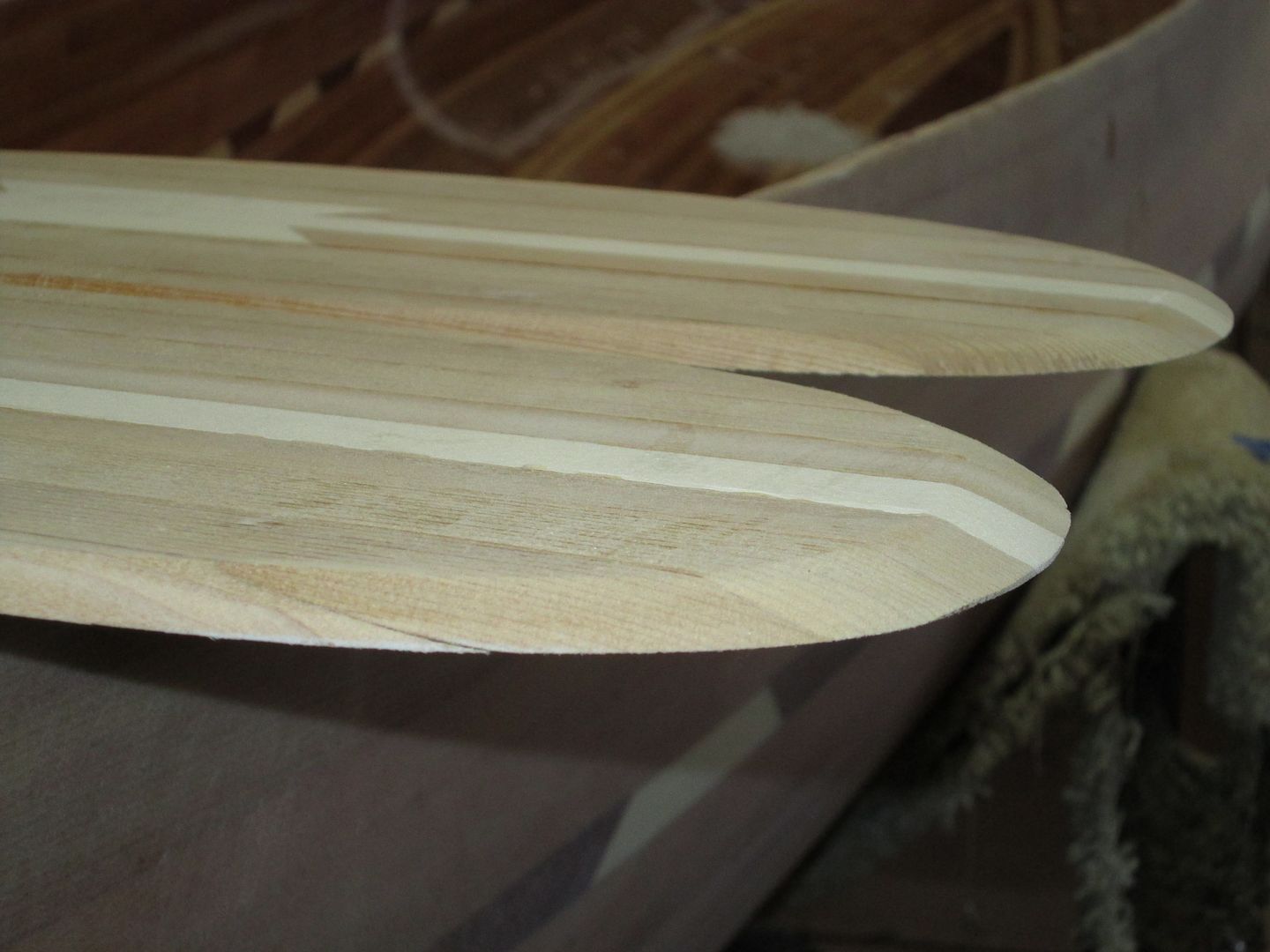Being so close to getting it off of the forms, I swiped a couple of hours between work & work today (made me late for my evening appointment but SOOO worth it!)
I'd picked up a 10 foot long White Oak 1x10 from the overhead of the barn on Sunday so I cut about 10 strips from it using the stripping saw. I also inspected the seat rails that I'd made after breaking the one the other day and noticed that the top strip of Cherry is already cracked on the front rail. I believe I've got 2 problems. 1) the transition from the top to the 2 inch drop is too abrupt (and I doubt I need 2" of drop anyway) and 2) the Cherry, cut that thin, is a bit brittle for being bent dry.
I'm hoping to solve this by soaking the Cherry and Oak strips in water for a few days, clamp them in the jig for a few more and then epoxy them and reclamp in the jig. I'll also cut new jigs to make a more gradual transition into the drop. I'm even considering building a steam chamber but, if I'm
that far down the rabbithole, I guess I should have listened to the Bear Mountain lady and steamed some stems! (ugh! where does it end?

)
I wiped the dust off the hull, spent an hour scuffing it with a scotchbrite pad and then quickly went over it again with 120 grit. Satisfied that the epoxy is roughed up enough to have tooth for the spar, I unscrewed the remaining forms & knocked them loose. Literally, as I had to, in most cases, reach up inside & whack the form back & forth a few times to break the seal of the hull to the tape. I then twisted the form so I could remove them around the tumblehome.
I was surprised by how hard I had to pry on the forms to get the bow and stern loose and I'll have to paper the strongback next time as well as the floor (I slopped a fair amount of epoxy around the base of the forms). I'd come too far, however, to be denied at this point and, besides, I had a prybar...

I pried up on the end forms to break them loose, lifted the canoe off, laid it on the floor and beat the bow & stern forms loose with a spare hunk of Hemlock 2x4 (honestly, those things are almost as useful as Ducttape).
I was very pleased when the stern form popped loose with only a ton of tape stuck to the stem instead of having glued the form to it when I sliced the strips to reglue them.

I then attempted to build a cradle using the #4 & #13 forms

but I'll need to revise the design and get something that sits on, or nearly on, the strongback as these are elevated and it will be much easier to sand if they are as close to the deck of the strongback as possible.

One thing that I was ecstatic about was the condition of the inside hull. As I said previously, I love being pleasantly surprised and, perhaps because I had expected the worst, I was shocked by how clean it appears to be. Maybe I'm a slow learner but I'm really feeling I'm going to merely do a cursory run at the "sucky sanding part" again and just glass it.

One thing that will have to happen, however, is that I'll need to remove this.

It's a small piece of aspen that I'd used to help align strips during some creative clamping. I'm not really sure how securely it's attached but it's not in a place where I can hide it under the seat or inside a bulkhead. Not to worry; I'll knock it off of there. Afterward, if I think of it, I'd like to get a weight. (I wouldn't want that piece of Aspen scrap throwing the scales off. Maybe I should lose the 3 pounds of tape too...)
When lifting it off, I was pleased with the stiffness and I was pleasantly surprised at how light it is but I also realize that I've got a fair amount of weight to add before it's seaworthy. I'd considered having my buddy come up & help flip it but stairs are difficult for him right now so I managed (actually far more easily than I expected).
Next up: fashion better cradles, soak the seat wood, (possibly haul my wallpaper steamer over... like it's not hot enough up there already) and clean up the inside. With any luck at all, I'll glass the inside (just a wet-out coat) this weekend.
Can I throw 2-3 coats of spar varnish on the epoxy the same day I wet it out?


















